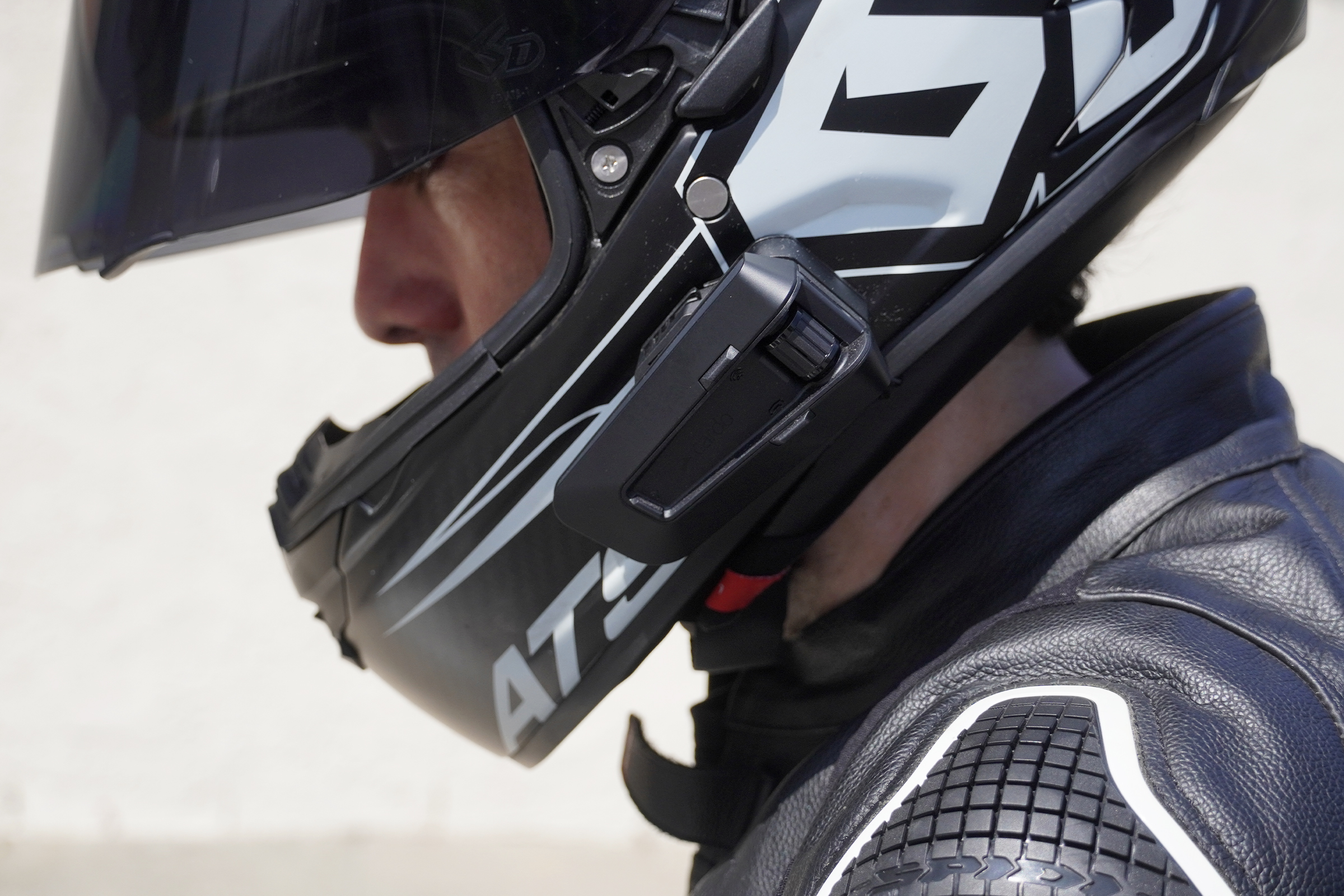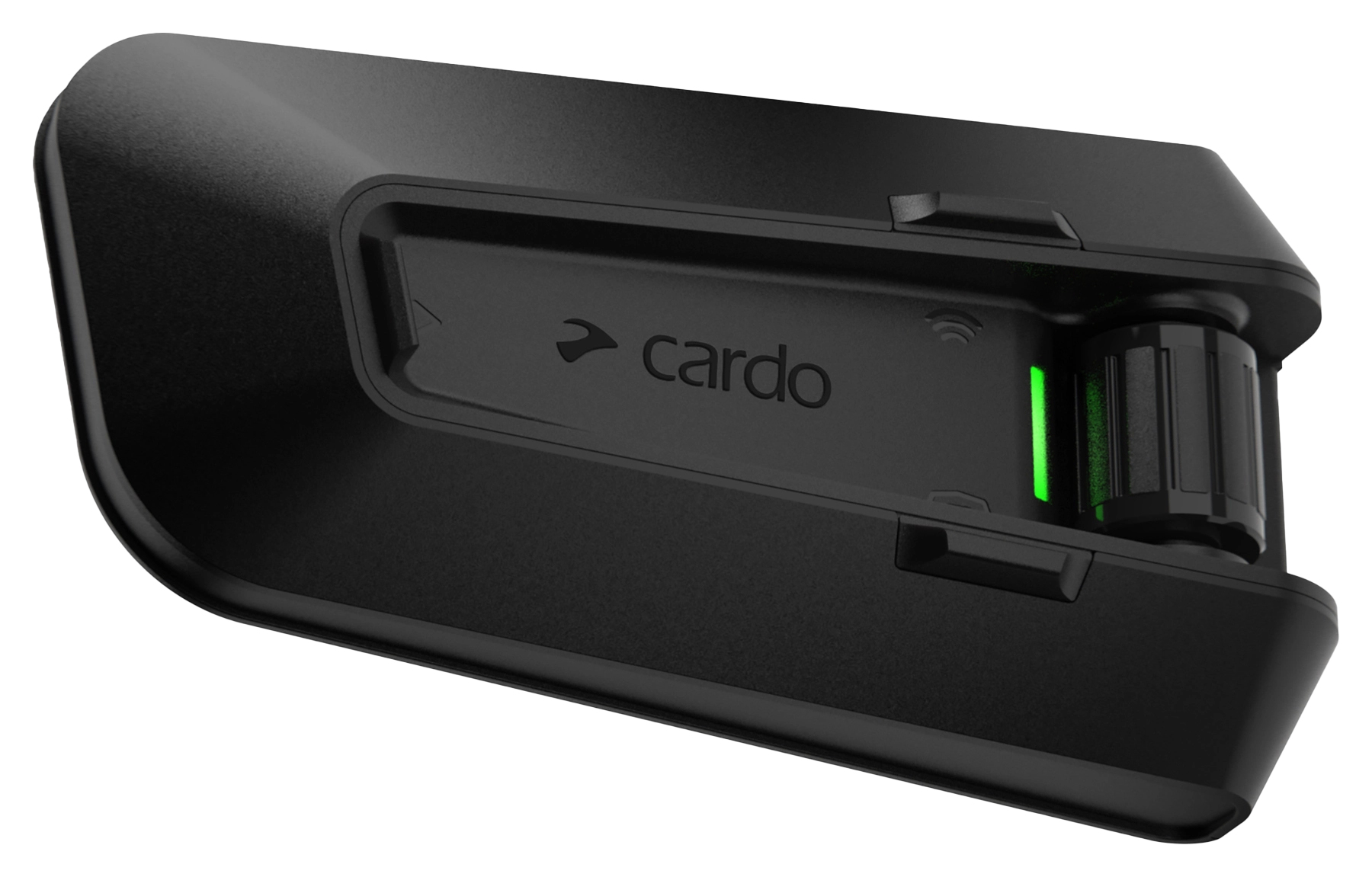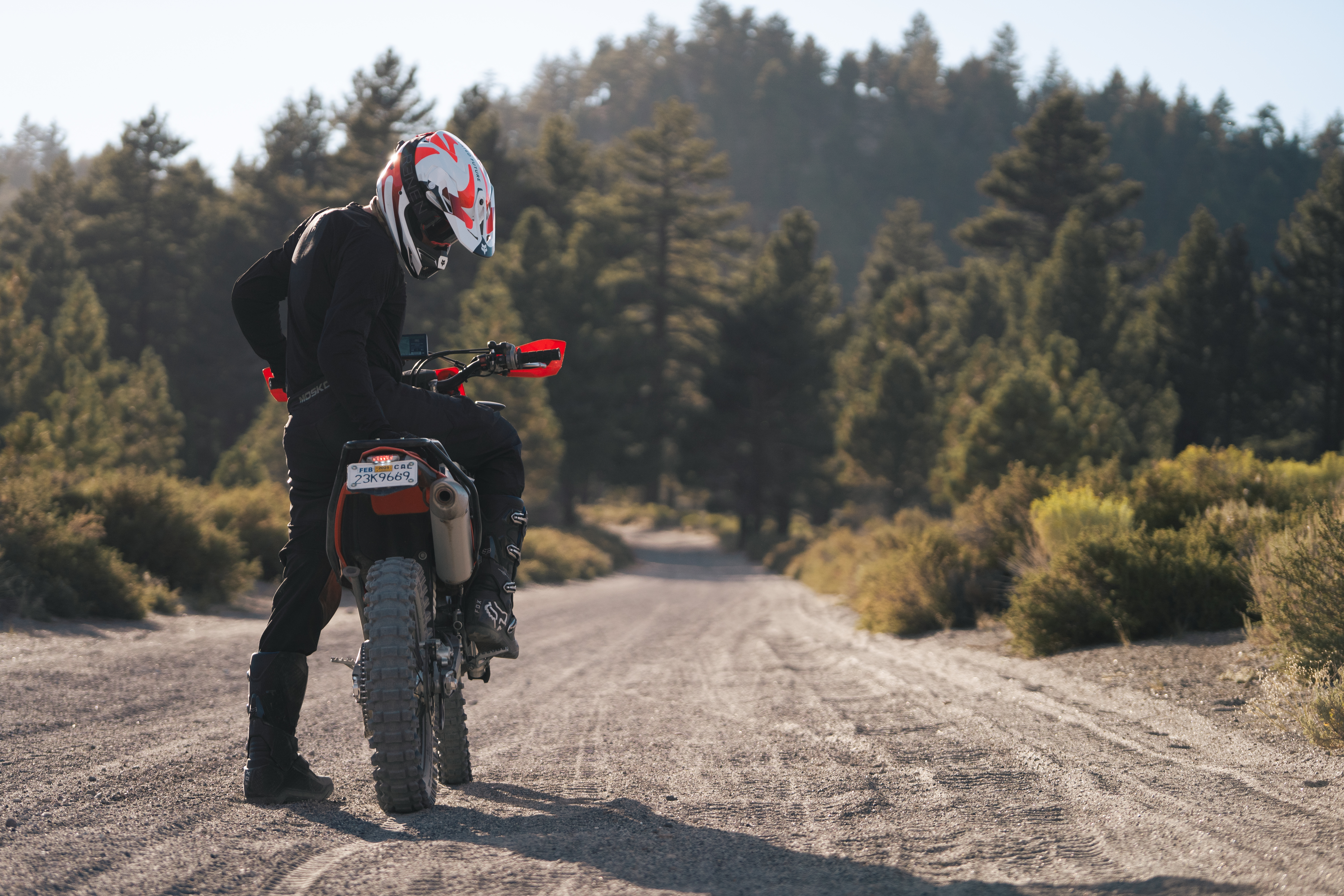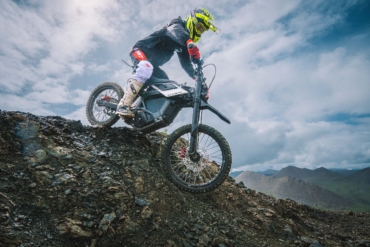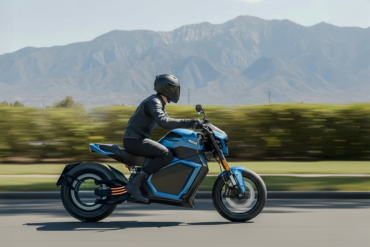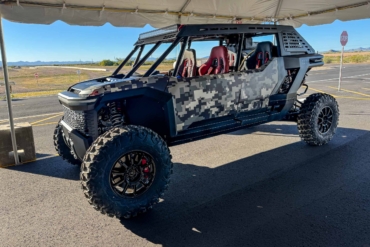Everything on the Cardo Packtalk Edge carries over, but the newest Palktalk Pro adds larger speakers, an automatic crash notification system, and a movement-sensing on/off function. However, the Pro costs approximately 20% more than an Edge, at an MSRP of $459.
Cardo invited me out to a media ride in Southern California to see if the new system is worth the additional money. First, we quizzed Cardo reps about how the new features work, and then installed the Packtalk Pro, connected our smartphone apps, and went out for a group ride. Testing the different microphone setups, helmet mountings, and app functions revealed the pros and cons quite quickly.
Now, with the Pro finally on sale in the United States, the question of whether to buy the newest Cardo Packtalk Pro or stick with an Edge largely comes down to safety considerations.
In short: The Cardo Packtalk Pro adds a crash detection system that targets commuter motorcyclists, which is a significant and worthy addition. The Packtalk Pro also comes with bigger speakers and other minimal changes to justify a price bump from the Edge. But the Cardo user interface is just as frustrating as it ever was.
- Connectivity: Bluetooth 5.2
- Intercom: Dynamic Mesh 2.0
- Group intercom maximum size: 15
- Group intercom maximum range: 5 mi.
- Voice operation: Yes
Pros
- New automatic crash detection system
- Larger speakers for music, phone calls, and intercom
- Auto sensing on/off function
Cons
- App, connectivity, and switchgear still balky, not quite intuitive
- Crash detection system relies on cellphone reception
- Significant 20% price bump versus Packtalk Edge
Installing the Cardo Packtalk Pro
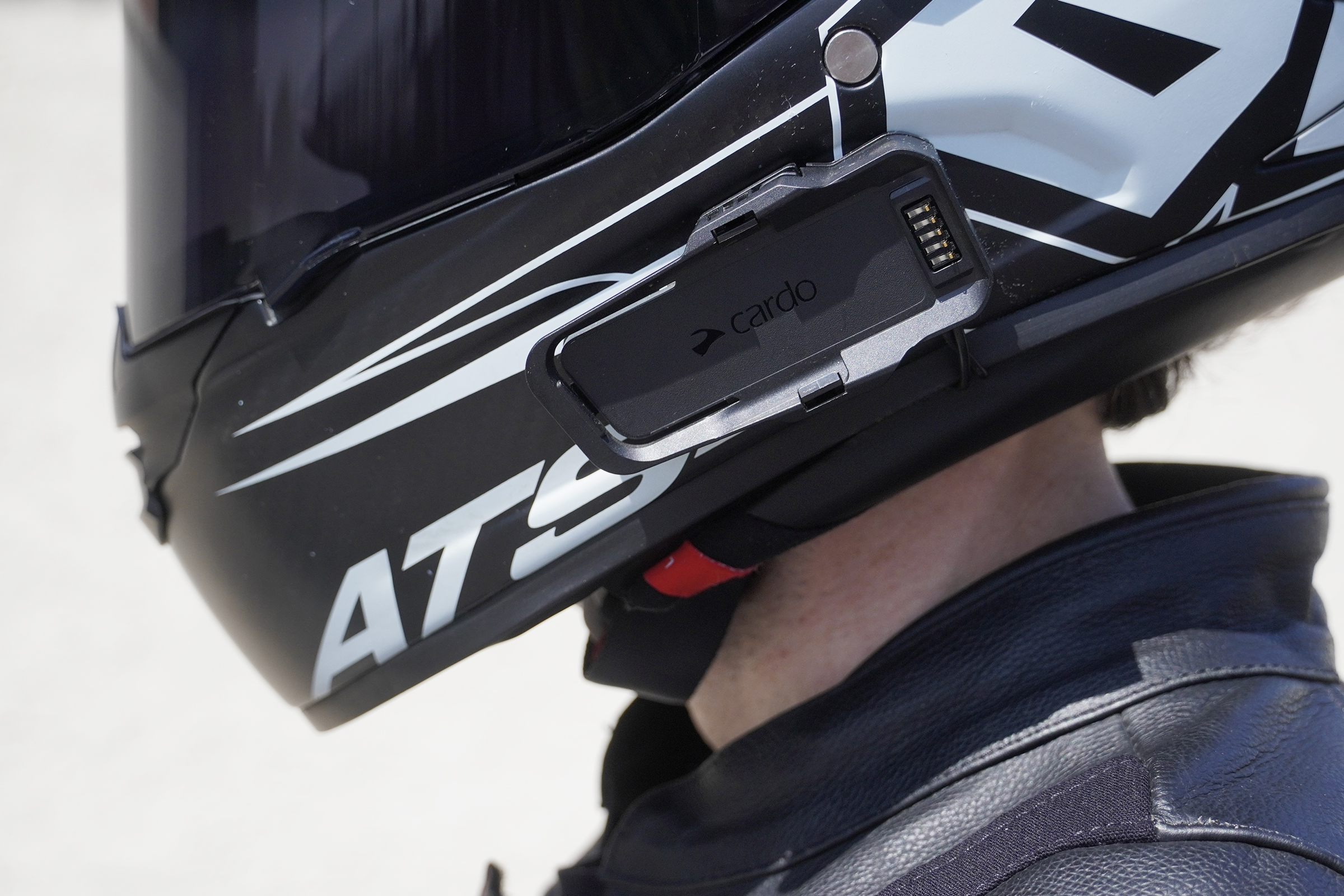
Besides being available only in black, the Packtalk Pro looks identical to the Edge. It even rides on exactly the same nifty magnetic “Air Mount” that can either be attached via an adhesive patch or clipped onto the side of a helmet.
This made installation fairly easy, as I already had an Edge that I’ve used for years. So, I only needed to swap in the new speakers and pop the Pro right onto the side of my helmet.
The JBL speakers now measure 45 mm in external diameter but with the same 41.5mm base that fits snugly in my 6D ATS-1R helmet’s ear recesses. Later, I swapped the setup into a new Alpinestars Supertech R10 helmet at home, and the speakers also fit easily.
However, the R10’s more aerodynamic exterior design limited the location of the stick-on Air Mount. So, I decided to move the mount slightly rearward to provide the best platform. Then I popped off the R10 cheek pads, routed the speaker and microphone wires, glued a mic to the inner chin area, and reassembled. The whole process took maybe half an hour.
Better Speakers, but Still Struggles With Wind Noise
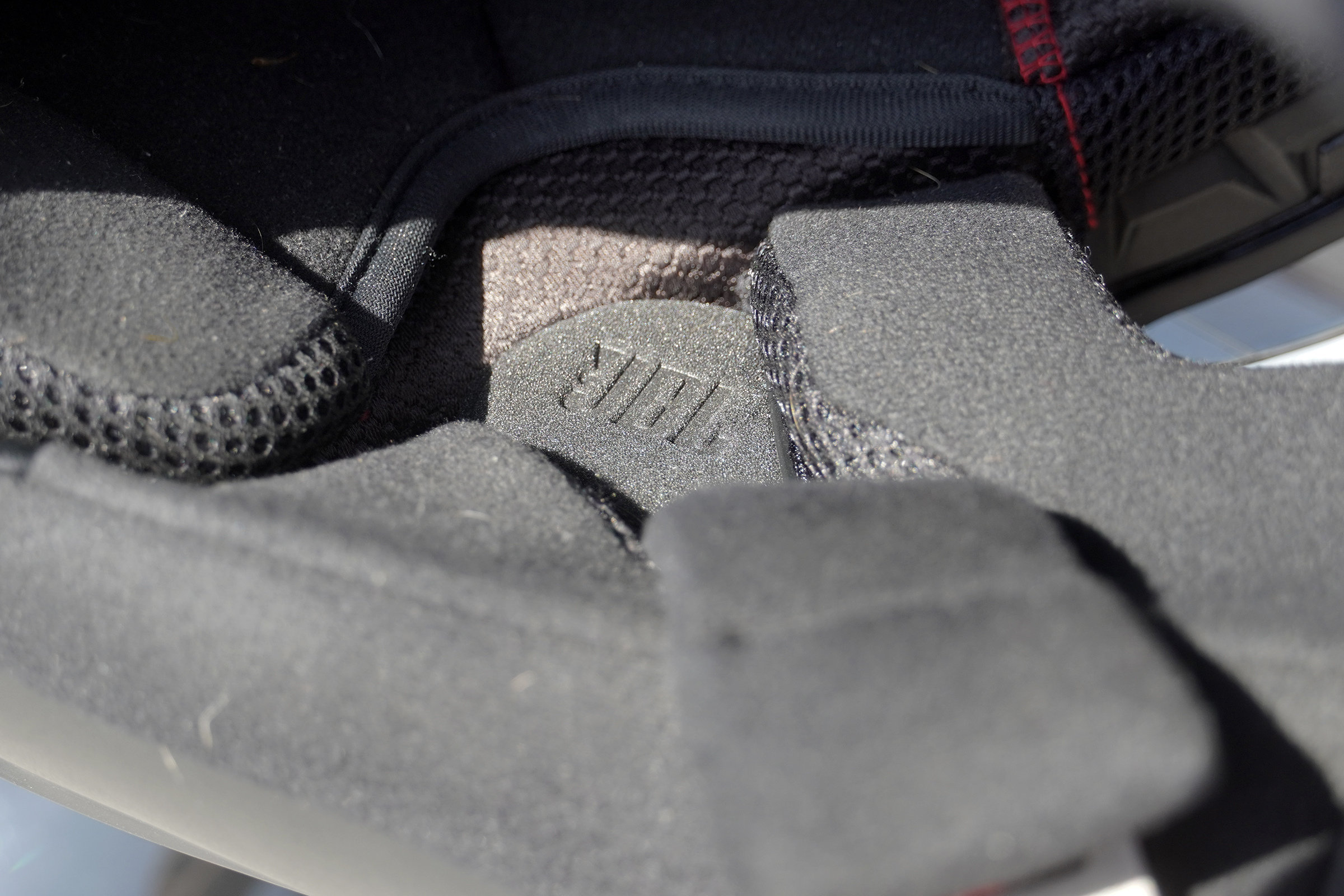
Before we headed out for the group media ride, I immediately tested the new speakers with some of my favorite tunes. The larger JBL hardware works in concert with a new generation of Cardo’s music processor, which allows for a more rounded sound with deeper bass compared to the Edge. But once we pulled away, as usual, wind noise immediately rendered any improvements to fidelity somewhat irrelevant.
At speeds up to about 45 mph, my music sounded okay, and our conversations stayed fairly clear. But holding a conversation above 70 mph required yelling only short, staccato phrases.
Forget enjoying music; doing so would require turning up the volume to truly painful levels. And for anyone with an open-face helmet, microphone placement will be key so as not to anger friends with wind noise that not only drowns out conversation but also turns off any music.
Accident Notification System Testing
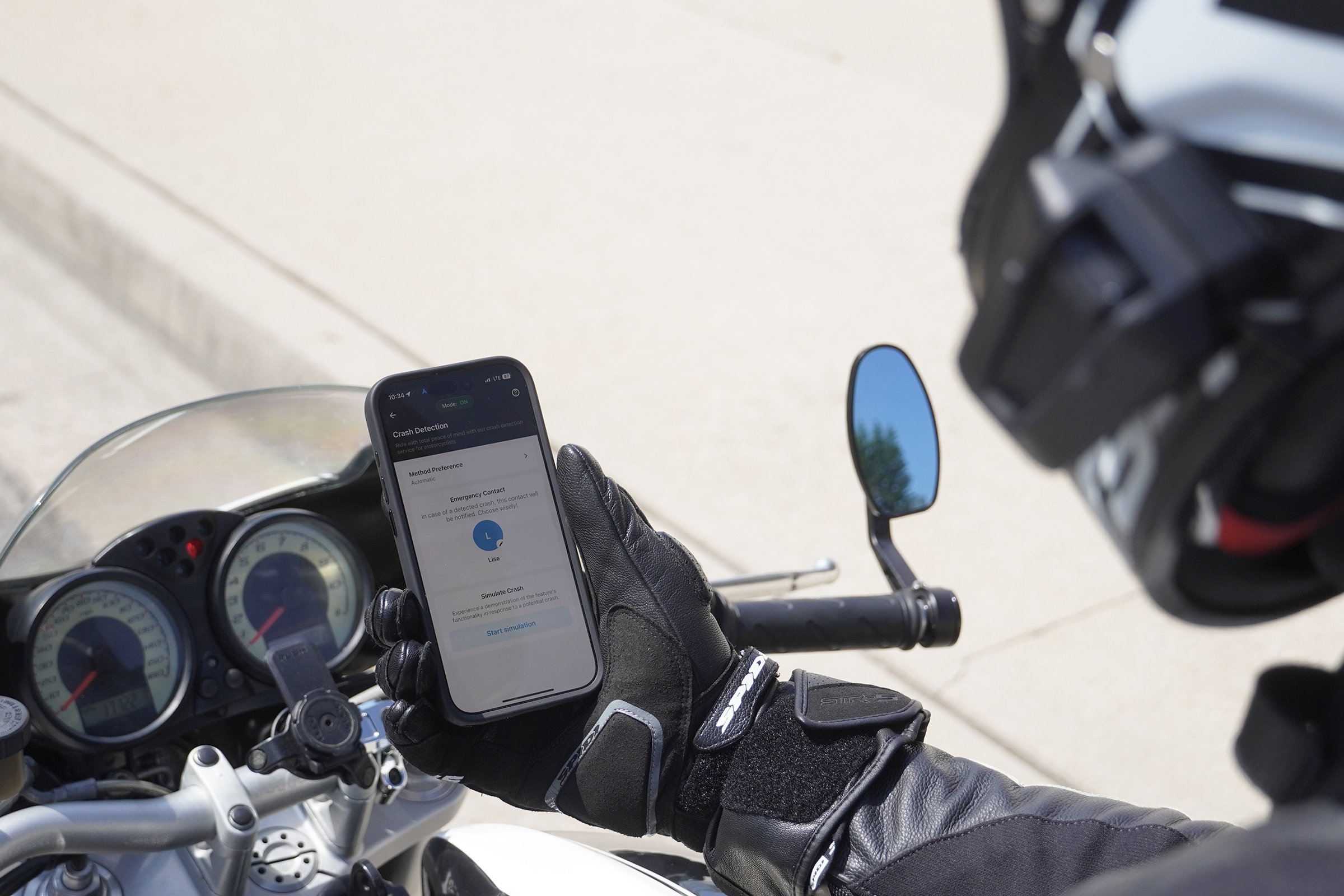
Luckily, nobody on our group ride truly tested the crash notification system. But Cardo reps on hand happily took a deep dive into how it all works before we hit the road. The system requires three elements to work in concert together: new hardware in the Packtalk Pro unit and a connection to the Cardo Connect smartphone app, which then communicates via cellphone with the cloud.
The physical hardware uses an accelerometer, which Cardo calls an “inertia measurement unit,” to record G forces and angular velocity. The data overwrites in a loop every 2 minutes and never transmits back to the cloud until it detects a crash.
If Cardo’s cloud software detects and confirms a crash, an automatic text message is sent to the emergency contact in the Cardo Connect app, reading “URGENT! [Name] may be involved in an accident & requires your attention.”
The message also includes a pin for a location on Google Maps. The system fixes that GPS location through the smartphone. However, actually sending the data back to the cloud once a crash has been detected requires data cell reception. Then, there’s a lag as the software processes to determine whether the crash is real or a false positive.
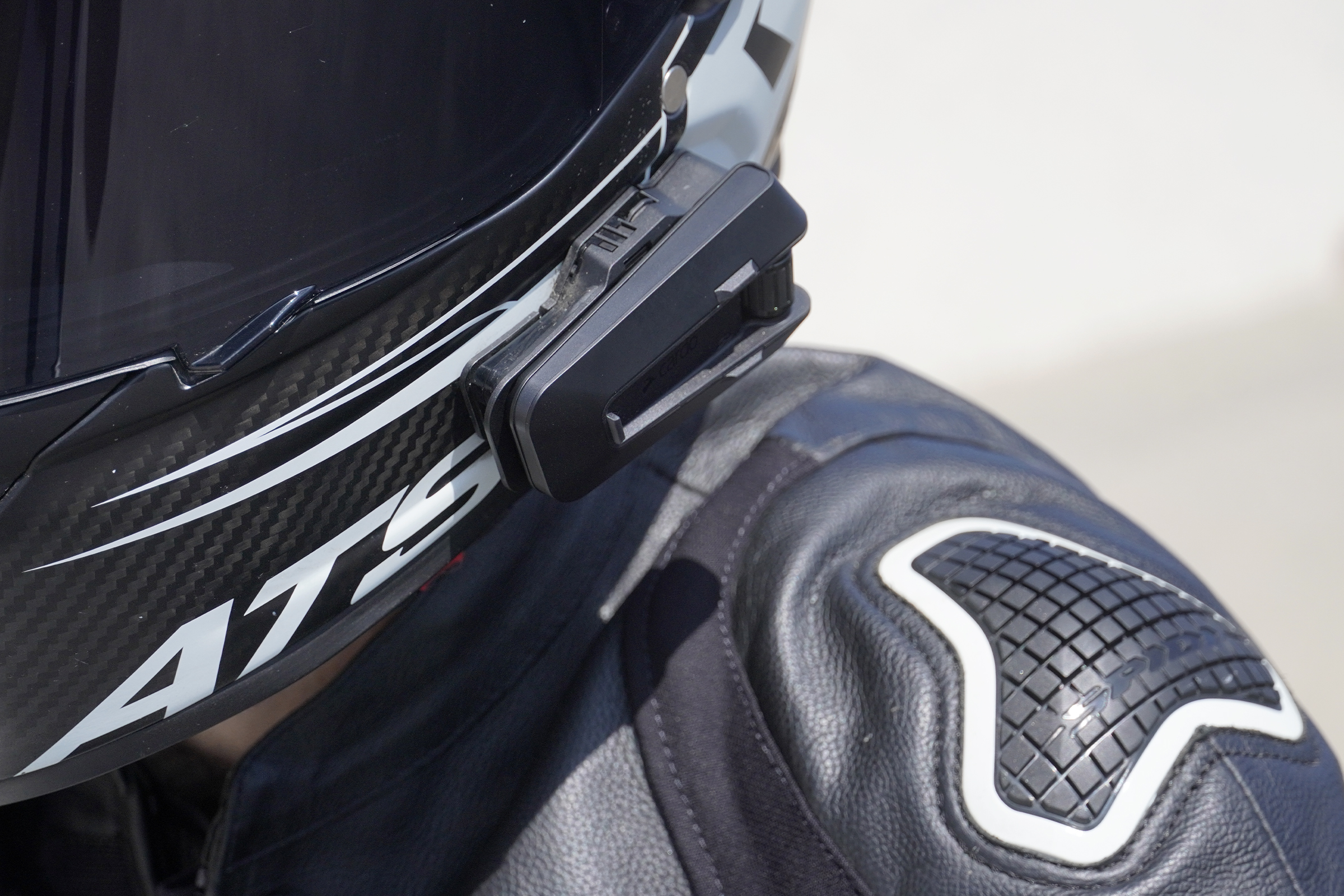
Cardo’s testing mostly focused on accidents involving other motor vehicles. Reps on hand told us the system logged almost 1 million km of riding during pilot testing in Spain, the U.S., and Israel. Cardo claims 95% accuracy at speeds over 30 mph and 85% accuracy below 30 mph.
An important detail here is the comparison to an iPhone’s innate crash detection software, which is tuned more toward passenger cars. In 20 simulated crashes that the Packtalk Pro picked up, the iPhone only counted one, or just 5% (in, albeit, a limited run).
Much like the iPhone, this Bluetooth communication device can turn off the alert if it determines the crash was a mistake, such as a dropped helmet. The user can also use the Cardo Connect app to indicate that all is well.
Of course, some latency exists, so the actual alert text may not be sent to the emergency contact for a few minutes. And that’s under ideal circumstances. Without cell reception, such as while canyon carving, the crash information never makes it to the cloud.
Cardo does not recommend using the system off asphalt since dirt bikes create much more jarring, and the system may detect many false positives. I easily found where to turn off the notification in the app.
Some User Interface Issues

The auto on/off also relies on the accelerometer. In a handful of rides since the media program, I have found that this feature works well. When I put on my helmet and pulled out my phone to open the Cardo Connect app, the Pro was always on and connected to my iPhone.
But this also meant that anytime I moved my helmet or put it in a car, the Pro switched on and started trying to connect. This might result in less battery life, though I still only needed to charge it every few days.
However, not needing to use the Pro’s buttons to turn it on brought up a number of missed opportunities to improve the overall user interface. First, because I don’t always want to listen to music or ride with friends, I don’t always use my Cardos. This means I often forget what each of the physical buttons on the side of the Pro and Edge actually does. I suggested to Cardo reps that a diagram on the app’s homepage might help.
As just one example, this device is the only one I’ve ever used where the Play button for music is not the same as the Pause button. Instead, once the music starts playing, the same button turns into a Skip button to jump to the next song. Meanwhile, the volume adjustment knob is the Pause button — which was so sensitive that when wearing gloves, I often turned the music off instead of the volume up or down.
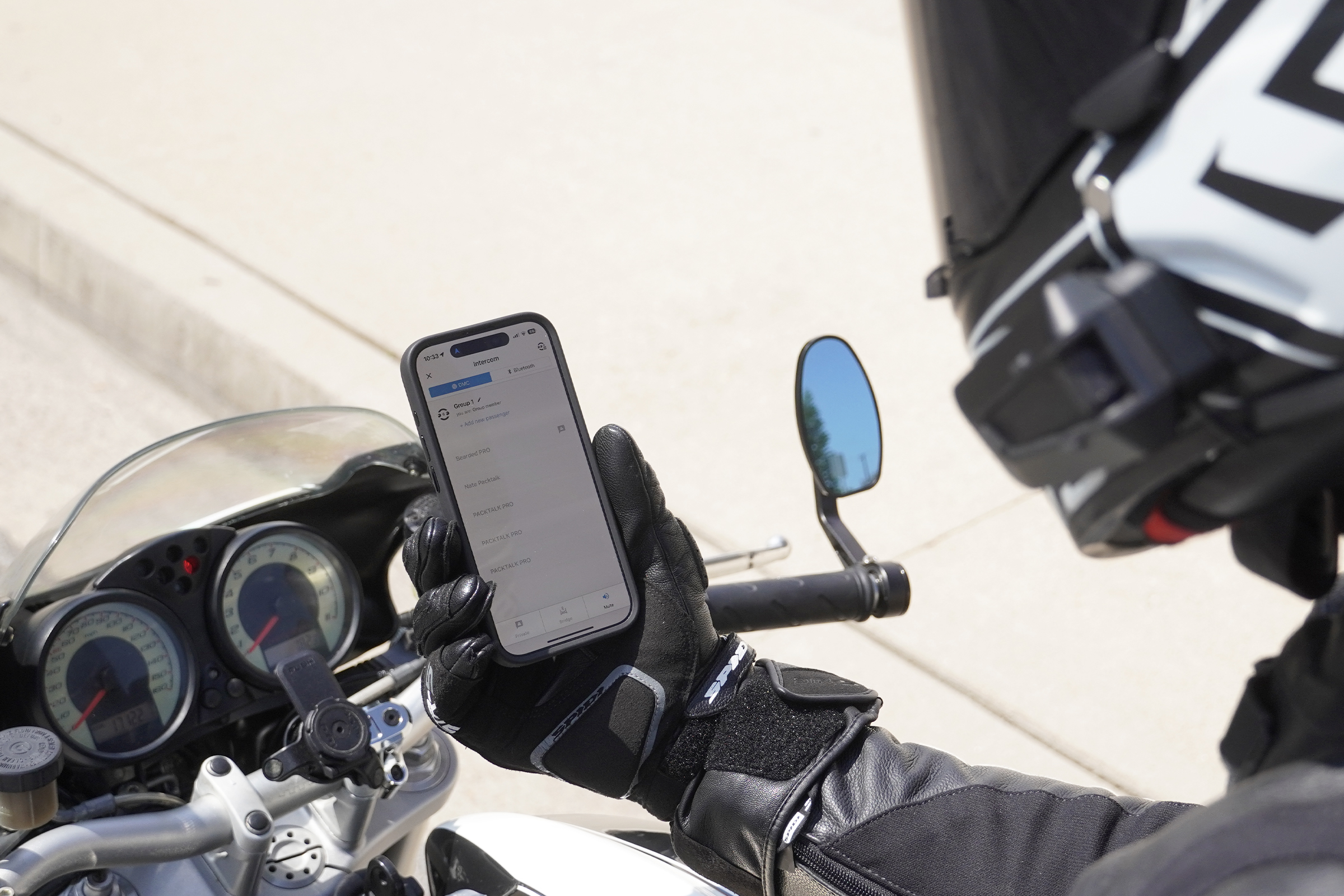
The three buttons and single knob required multiple combinations of button-mashing to start connections, answer phone calls, and adjust the volume. So, I usually ended up pulling the unit off the Air Mount to look at it. But then it was disconnected from the speakers, and I couldn’t tell if I answered a phone call, was then speaking with a friend via the intercom, or had the music volume where I wanted it.
Meanwhile, the app itself has a super-simple design. Usually, this is a pro for user interfaces. But for Cardo, it meant that if something wasn’t working as intended — which happened regularly — I had no recourse but to try the same thing again and again. For example, if I couldn’t join my friends’ group chat, I had to quit the app multiple times and start over rather than troubleshooting within the app.
I also wished the Cardo Packtalk Pro had told me who was calling since I got about a million phone calls a day from my best friend, Potential Spam. If I had my phone in my pocket instead of on a Quadlock or other handlebar mount, I never knew whether to answer calls.
The volume gap between music and either intercom or phone calls could be extreme. It ranged from an almost inaudible faintness to painful loudness, and there was no way to control each individually.
Conclusions on the Cardo Packtalk Pro
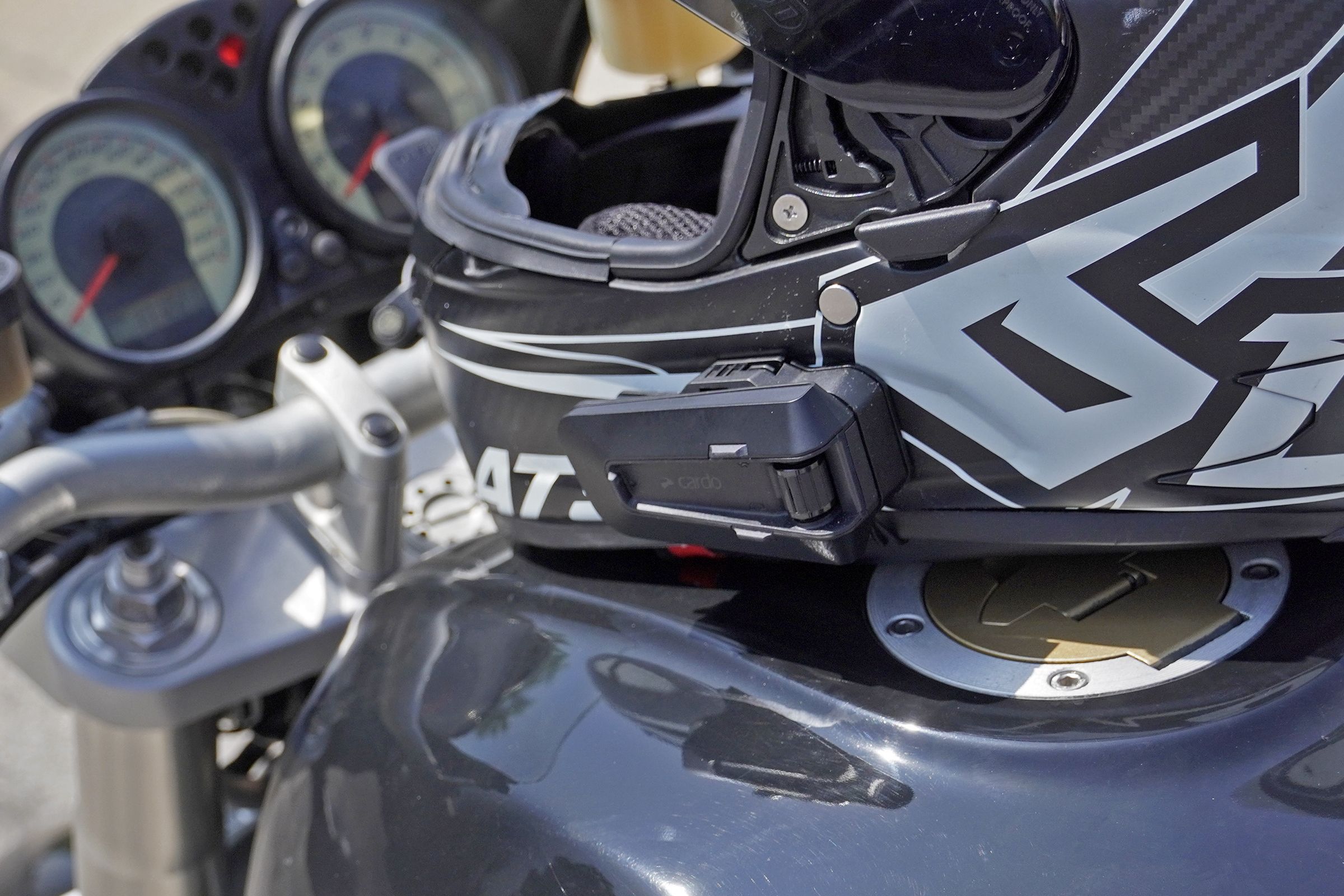
Sometimes, the Cardo Packtalk Pro worked perfectly. But as often as not, the new Pro was just as frustrating as the old Edge. An updated app promised during the media program seemed to have made no difference in my experience since the Pro went on sale on July 7. Both the Cardo Packtalk Pro hardware and software could use further refinement, even though the Pro added improvements and features over the Edge.
Surprisingly, the updated app continued Cardo’s peculiar decision not to integrate the Riser group riding app that the company bought from KTM about a year ago. Riser aims to be the Strava of motorcycling, but even Cardo reps acknowledged it still has a long way to go to attract more users.
Is the Pro worth an upcharge versus the Edge? From a safety standpoint, the automatic crash detection meant a lot to me. Though I mostly ride canyons on the weekends, rather than commuting as the system is designed for, I appreciated the knowledge that an alert might go out if I go down where I have cell reception. It had slightly better sound quality at low speeds, and the auto on/off didn’t matter much, in my opinion. I did prefer the black finish to my Edge’s gray.
Depending on the intended riding, concerns about safety, or cynicism about even needing help after a crash, the Cardo Packtalk Pro might be worth the extra money. After all, the basic Edge still isn’t particularly cheap, and it’s hard to put a price tag on additional peace of mind.
